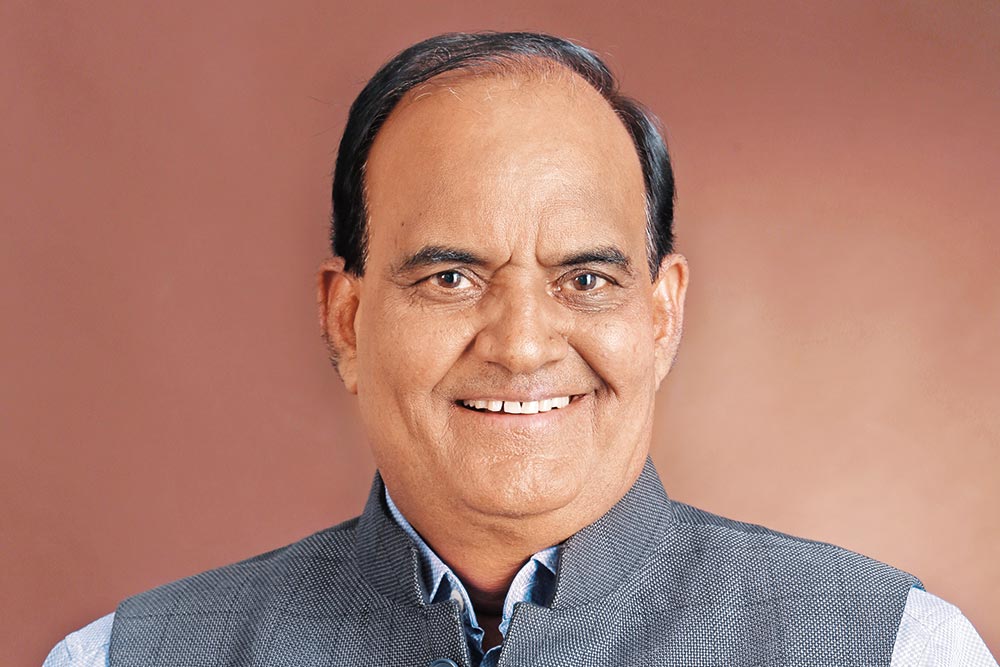Sita Ram Gupta is one such individual who responded to the call of Dr. Desh Bandhu Gupta (DBG), Founder and chairman of Lupin Ltd. Dr. DBG dreamt of fulfilling his inner voice urging him to do something for India’s villages, to give back to the rural India something which is transformative and which can usher into ease of living.
Sita Ram Gupta was a top performer as an Electrical Engineer in the Rajasthan State Electricity Board. So when Dr Gupta invited him to join this noble cause, he gave up a career that would have allowed him to bring light to many houses. But not in the lives of the people in India. He always wanted to brighten the lives of people, make them self sufficient and reliant.
In 1989, he quitted the government job and joined the Lupin Foundation. With this single move there was a turn around in the career of Mr.Gupta.
He understood the challenges of the struggle faced by the rural masses particularly downtrodden community. Mr. Gupta used his skills as an engineer to resolve the problems. Basically, he used the systematic problem- solving approach to identify the problems and providing solution with the right prescription.
As Executive Director of Lupin Human Welfare & Research Foundation (LHWRF), Gupta was responsible for the overall administration and control of integrated and holistic rural development . Sita Ram Gupta has a responsibility to execute the vision of Dr. DBG.
Looking at his commitment and conviction, he was responsible for managing the integrated and holistic rural development activities being carried out in nine Indian States, viz., Rajasthan, Madhya Pradesh, Maharashtra Uttarakhand, Andhra Pradesh, Goa, Jammu & Kashmir, Gujarat and Sikkim.
Lupin Limited – a major Indian pharmaceutical company undertook a model of development which is replicable , evolving and holistic in nature through Lupin Human Welfare & Research Foundation (LHWRF).
The outcome of integrated and holistic rural development activities designed by Sita Ram Gupta led to adopting an approach based on three broad verticals mainly Economic Development, Social Development and Natural Resource management . His singular approach was adoption of District Development Model.
Gupta knew that the national GDP is the sum total of the GDP of all the districts of the country.
He strongly believes that the accelerated growth in the districts can enable India to attain the $5 trillion economy goal set out by Prime Minister Narendra Modi.
But to push the national GDP would require support at the district level. Therefore, he evolved a strategy to enhance the GDP of the aspirational, lower-middle and middle-level districts separately.
Gupta was aware that the challenge would be poverty and it need to be addressed. So, he adopted the approach to empower people with locally available resources— this adoption of Empowerment Line of Mckinsey has been his touchstone for accelerated development. He was confident that the Empowerment Line approach would yield the correct dividend.
His approach seeks broader improvements in people’s lives than the narrow approach of calorie intake in the poverty line framework. Gupta knew that the real wealth of the nation are its people..He worked scientifically using the Lupin Gram Vikas Panchayats (LGVP), a platform that resulted inthe development of villages with grassroot initiatives.
A true visionary, Gupta realised the need for a convergence and collaboration of various stakeholders: local communities, top government research institutions, government agencies, financial institutions, think tanks and multilateral agencies. His work to achieve the same is pathbreaking in itself.
The outcome of these three initiatives is there for all to see.
In Bharatpur, he successfully transformed the idea of turning waterlogged areas into fish farm ponds, thus enabling the area into the main hub of fish farming production. Nature has given Bharatpur amazing flora and fauna in the form of mustard crop that helped the locals to get economically empowered through Bee Keeping.
Gupta revolutionised beekeeping and brought Bharatpur on the world map as the number one exporter and second-largest honey- producing district.
He empowered women through self-help groups and building thousands of sustainable enterprises like Tulsi mala making, garment hubs and many more. It was not an easy task. The challenges were many. Changing the mindset of locals to become entrepreneurs was one; getting them the necessary market linkage and infrastructure support was another.
Animal husbandry is an immediate source of income for farmers; he procured 15,000 Murrah buffaloes for Bharatpur, which surged the production of milk and later on the value addition was done with various milk products.
Similarly, he promoted goat rearing, commercial backyard poultry and fisheries on a large scale. The latest in line is promoting natural farming to make farming cost-effective, chemical-free, and to provide nutritious food on the table.
Another successful effort is visible in the Dhule district of Maharashtra. Water scarcity was a major issue in this area. It was a herculean task and required immediate attention since the lives of many farmers depended on it.
Gupta and his team accomplished it by building 223 check dams and rejuvenating seven small rivers in Dhule, leading to mass vegetable cultivation.
This approach of district development now has resulted into envisioning the idea of Samruddh Bharat, the time of this idea has come now.
During the Covid pandemic, where LHWRF worked, Gupta and his team anticipating demand and garment hubs were converted into mass mask production centers. This ensured that the livelihood was less impacted, and importantly, it empowered women as the main bread earner in the households.
The results have been noticed, and Sita Ram Gupta has been invited to implement and execute similar projects across the country.
Gupta’s work has been recognised at different levels, and he has been conferred with many awards at the State, National and Global level.











